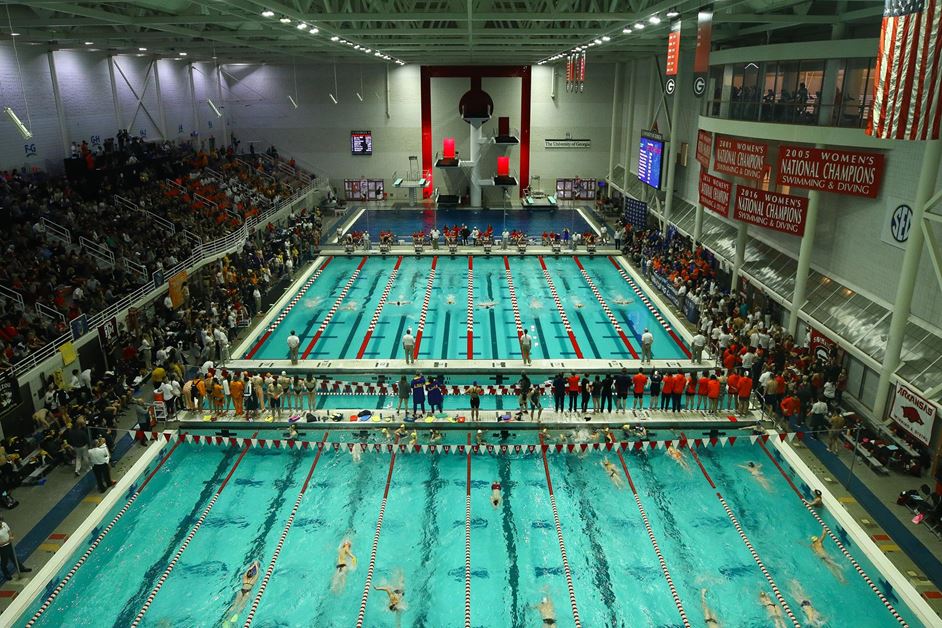SEC and Big Ten public schools outpaced their Power Five competitors by collectively generating more than $2 billion in operating revenue for each conference during the 2022 fiscal year, according to a recent USA Today analysis of financial reports.
Excluding money from student fees and other forms of institutional support, the SEC and Big Ten ranked well ahead of the ACC, Big 12, and Pac-12 in terms of actual revenue generated by athletic departments. Pac-12 members receive more revenue from student fees than other conferences, with nearly half (eight) of the 19 Power Five Schools that received at least $10 million in allocated revenue last year hailing from the Pac-12.
Median Athletic Department Revenue by Conference
- SEC – $159 million, from Mississippi State ($110.7 million) to Alabama ($203 million)
- Big Ten – $150.1 million, from Rutgers ($85.6 million) to Ohio State ($251.6 million)
- ACC – $134.4 million, from Georgia Tech ($94.8 million) to Clemson ($125.2 million)
- Big 12 – $106.9 million, from Oklahoma State ($91.4 million) to Texas ($239.3 million)
- Pac-12 – $96.9 million, from Washington State ($69.7 million) to Oregon ($153 million)
It’s worth noting that two of the Pac-12’s top earners — USC and Stanford — are not included in this data because they are private schools. Still, though, it’s discouraging that the SEC’s lowest revenue generator (Mississippi State with $110.7 million) outperformed every Pac-12 public school except Oregon and Washington.
The gap between the SEC, the Big Ten, and everyone else only figures to grow next year when Big 12 powerhouses Texas and Oklahoma move to the SEC and Pac-12 rivals UCLA and USC jump to the Big Ten. The SEC and Big Ten are also soon set to cash in on lucrative media rights deals that will further separate them from the field.
Forty-nine schools surpassed $100 million in revenue, but many had to spend almost as much if not more to get there. Here are the top five public schools in terms of athletic department profitability last year:
Public School Athletic Department Profits, 2022 Fiscal Year
- Georgia – $34,022,063
- Ohio State – $25,881,927
- Auburn – $22,977,679
- Purdue – $22,113,622
- Central Florida – $20,128,916
It’s a bit surprising to see Purdue and Central Florida on the above list. American Athletic Conference member Central Florida is the only non-Power Five school in the top 10, but that’s set to change soon as they’re joining the Big 12 next season.
Indiana was listed atop the list of most profitable athletic departments at public schools, but the university clarified that it actually broke even last year and the misunderstanding was due to a one-time donation from the IU foundation to help offset financial problems during the COVID-19 pandemic.
When taking inflation into consideration, USA Today found that neither the combined revenue or spending of the 52 Power Five public schools in 2022 exceeded pre-pandemic levels.
From a swimming perspective, here’s how the top teams in the country last season rank in terms of their athletic departments’ operating revenues.
Top 10 NCAA Swimming & Diving Teams, 2023
Men’s (Points at 2023 NCAA Championships – Rank in Revenue)
- Cal, 482 – 34th
- Arizona State, 430 – 33rd
- Texas, 384 – 2nd
- Indiana, 379 – 13th
- NC State, 373.5 – 48th
- Florida, 367.5 – 8th
- Tennessee, 216.5 – 18th
- Stanford, 143.5 – N/A
- Virginia Tech, 133 – 38th
- Auburn, 127 – 11th
Women’s (Points at 2023 NCAA Championships – Rank in Revenue)
- Virginia, 541.5 – 14th
- Texas, 414.5 – 2nd
- Stanford, 333 – N/A
- Louisville, 288 – 23rd
- NC State, 263 – 48th
- Ohio State, 223 – 1st
- Indiana, 219 – 13th
- Tennessee, 214 – 18th
- Florida, 179 – 8th
- North Carolina, 152 – 32nd
Two Power Five schools, Iowa and Michigan State, cut swimming and diving teams after the 2020-21 season. Iowa ultimately opted not to cut its women’s squad while Michigan State is still fighting for reinstatement. Both athletic departments seem to have balanced their budgets after facing deficits in 2019-20.
Michigan State earned significantly more ($172,799,513) than it spent last year ($156,449,795), a huge rebound after they were nearly $18 million in the red in 2019-20. The Spartans ranked 12th in the nation in operating revenue for 2022 fiscal year.
Iowa made slightly more ($151,483,092) than it spent last year ($151,144,861), an improvement from its $3.5 million deficit before the pandemic. The Hawkeyes ranked 21st in the nation in revenue.
Sixteen out of the top-20 earning schools sponsor swimming and diving — including nine of the top 10 — with Oklahoma, Michigan State, Clemson, and Oregon being the outliers.
You can check out the full financial database and USA Today analysis here.

What most people don’t know is Ohio States Athletic department is run as a business model and works independently of the school.
Look, I know swimming isn’t a money maker and not the most important sport on campus. But it’s crazy to see Purdue that high on the list and yet they went the cheap route on their head coaching higher. Easily could have put more money in the head coaching salary, conducted a national search to find a more experienced coach and worked to re-energize the program.
It’s called a “hire” when hiring someone. You need to brush up with some more higher education.
You’re right, swimming isn’t a money maker and it’s not the most important sport on the campus. That should answer your question,